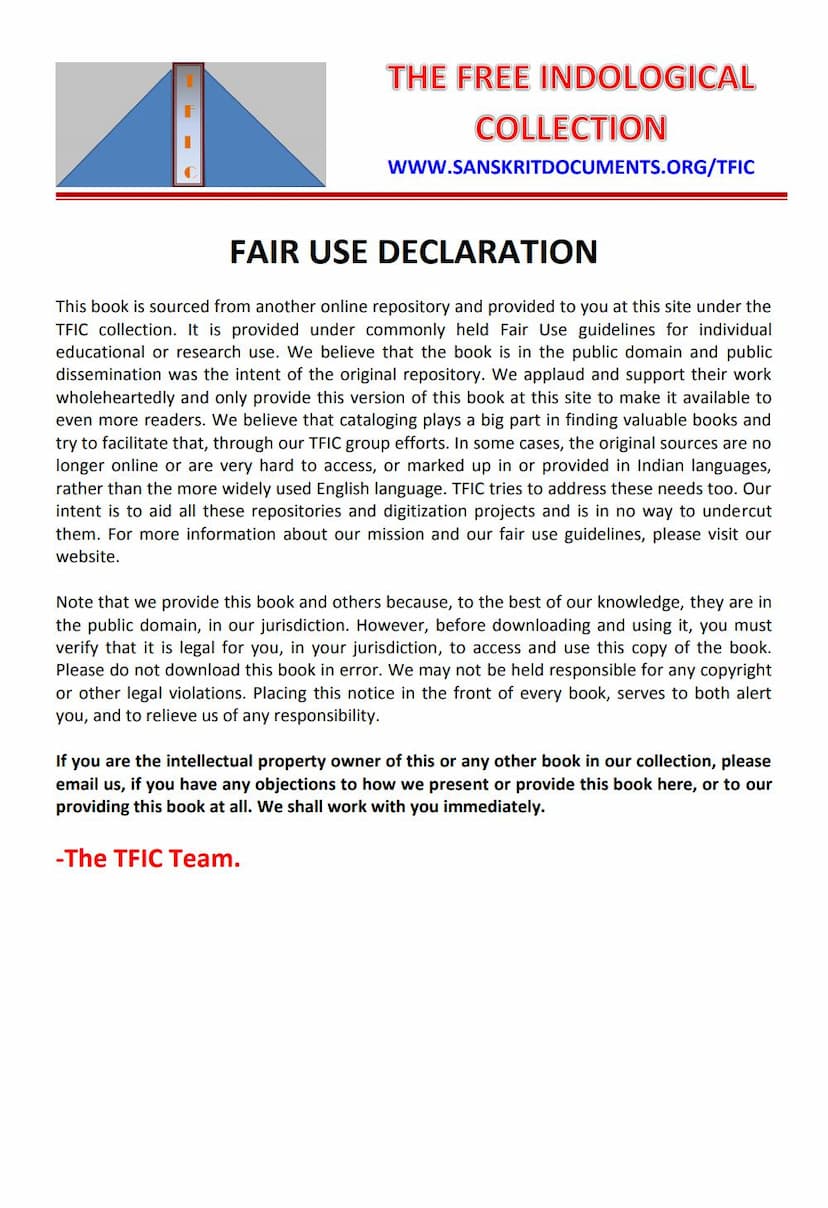Samyak Sadhna
Added to library: September 2, 2025

Summary
This document is the book "Samyak Sadhna" (Correct Practice) published by Vishwashanti Adhyatmik Gyanmandir. It is presented as a guide for spiritual seekers, aiming to lead them towards self-realization and liberation from worldly suffering.
Key Themes and Contents:
The book is structured into 62 chapters, each addressing a different aspect of spiritual practice and Jain philosophy. The central message revolves around understanding the true nature of the self (Atma) and its distinction from the material body and worldly attachments.
Here's a summary of the core ideas presented across various chapters:
- The Nature of the Soul (Atma): The book emphasizes that the soul is an eternal, unchanging, pure consciousness, full of bliss and knowledge. It is distinct from the body, mind, senses, and external objects. The soul's true nature is obscured by ignorance (Ajnana) and attachment (Raga-Dvesha).
- Ignorance as the Root of Suffering: Ignorance about the true self is identified as the primary cause of all suffering, leading to attachment, aversion, and the cycle of birth and death (Samsara).
- The Importance of Knowledge and Right Vision (Samyak Darshan): True knowledge, understanding the tattvas (realities) and the difference between the self and non-self, is crucial for liberation. This right vision, coupled with right faith, leads to the destruction of ignorance and the emergence of the soul's innate purity.
- Right Conduct (Samyak Charitra) and Right Effort (Samyak Sadhana): The book advocates for detachment from worldly desires, control of the senses, practice of non-violence (Ahimsa), truthfulness, non-stealing, chastity, and non-possession. These practices are essential for purifying the soul and progressing on the spiritual path.
- The Role of Meditation and Self-Inquiry: Consistent meditation, self-reflection, and inquiry into the nature of "Who am I?" are presented as powerful tools for realizing the self and overcoming mental distractions and negative tendencies.
- Detachment and Renunciation (Tyaga/Vairagya): True renunciation is not merely external but an internal detachment from desires, attachments, and ego. The book encourages shedding the illusion of ownership and seeing all possessions and relationships as transient.
- Overcoming Obstacles: Chapters address common spiritual hurdles like ego (Ahankar), attachment (Asakti), fear, desires (Vasana), and the delusive nature of worldly pleasures, providing guidance on how to overcome them.
- The Goal of Liberation (Moksha): The ultimate aim is to break free from the cycle of rebirth and suffering and attain the state of pure, liberated soul (Siddha). This is achieved by eradicating karmic bonds through right knowledge, faith, and conduct.
- Practical Guidance: The book offers practical advice through various chapters, such as controlling the mind, cultivating equanimity, practicing patience, developing self-confidence, and maintaining vigilance against worldly temptations.
- The Teachings of Tirthankaras: The wisdom of the Tirthankaras is presented as the guiding light for this path, and their teachings are the foundation of the principles discussed.
Overall Message:
"Samyak Sadhna" serves as a spiritual manual, offering a comprehensive framework for achieving spiritual liberation according to Jain principles. It emphasizes self-effort, self-reliance, and the transformative power of inner purification through right knowledge, faith, and conduct. The book encourages readers to actively engage in spiritual practice, detach from the ephemeral, and realize their true, eternal self.